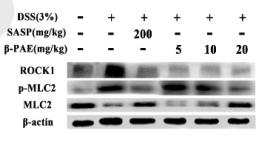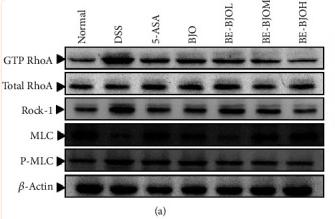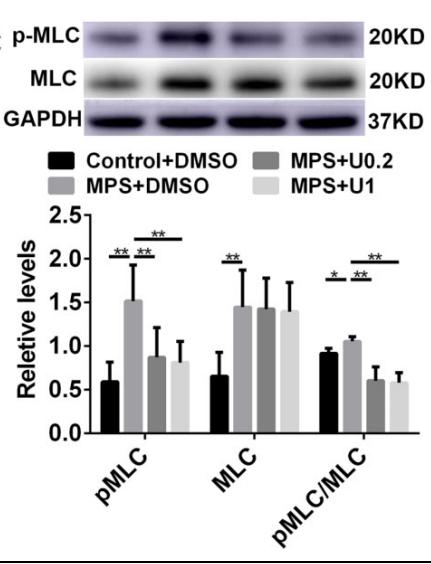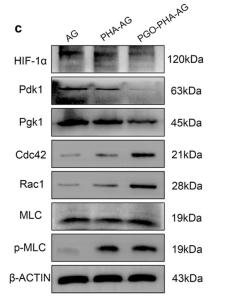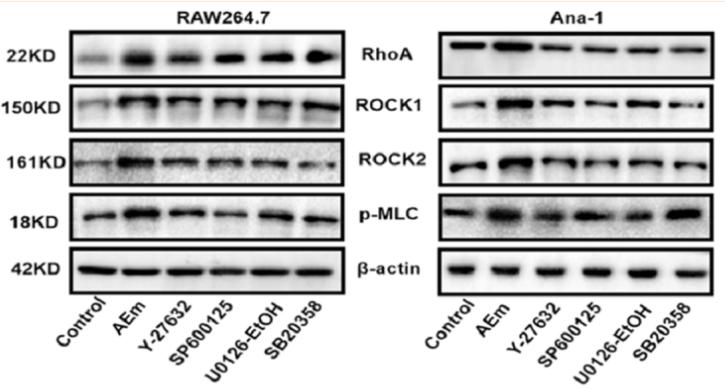Phospho-MLC2 (Ser15) Antibody - #AF8618
| Product: | Phospho-MLC2 (Ser15) Antibody |
| Catalog: | AF8618 |
| Description: | Rabbit polyclonal antibody to Phospho-MLC2 (Ser15) |
| Application: | WB IHC IF/ICC |
| Cited expt.: | WB, IHC |
| Reactivity: | Human, Mouse, Rat |
| Prediction: | Horse, Sheep, Rabbit, Dog, Chicken |
| Mol.Wt.: | 18kDa; 19kD(Calculated). |
| Uniprot: | P10916 |
| RRID: | AB_2846214 |
Product Info
*The optimal dilutions should be determined by the end user. For optimal experimental results, antibody reuse is not recommended.
*Tips:
WB: For western blot detection of denatured protein samples. IHC: For immunohistochemical detection of paraffin sections (IHC-p) or frozen sections (IHC-f) of tissue samples. IF/ICC: For immunofluorescence detection of cell samples. ELISA(peptide): For ELISA detection of antigenic peptide.
Cite Format: Affinity Biosciences Cat# AF8618, RRID:AB_2846214.
Fold/Unfold
Cardiac myosin light chain-2;Cardiac ventricular myosin light chain 2;CMH10;MLC 2v;MLC-2;MLC-2v;MLC2;MLRV_HUMAN;MYL 2;MYL2;Myosin light chain 2 regulatory cardiac slow;Myosin light polypeptide 2 regulatory cardiac slow;Myosin regulatory light chain 2;Myosin regulatory light chain 2 ventricular/cardiac muscle isoform;Regulatory light chain of myosin;RLC of myosin;Slow cardiac myosin regulatory light chain 2;ventricular/cardiac muscle isoform;
Immunogens
A synthesized peptide derived from human MLC2 around the phosphorylation site of Ser15.
- P10916 MLRV_HUMAN:
- Protein BLAST With
- NCBI/
- ExPASy/
- Uniprot
MAPKKAKKRAGGANSNVFSMFEQTQIQEFKEAFTIMDQNRDGFIDKNDLRDTFAALGRVNVKNEEIDEMIKEAPGPINFTVFLTMFGEKLKGADPEETILNAFKVFDPEGKGVLKADYVREMLTTQAERFSKEEVDQMFAAFPPDVTGNLDYKNLVHIITHGEEKD
Predictions
Score>80(red) has high confidence and is suggested to be used for WB detection. *The prediction model is mainly based on the alignment of immunogen sequences, the results are for reference only, not as the basis of quality assurance.
High(score>80) Medium(80>score>50) Low(score<50) No confidence
Research Backgrounds
Contractile protein that plays a role in heart development and function (By similarity). Following phosphorylation, plays a role in cross-bridge cycling kinetics and cardiac muscle contraction by increasing myosin lever arm stiffness and promoting myosin head diffusion; as a consequence of the increase in maximum contraction force and calcium sensitivity of contraction force. These events altogether slow down myosin kinetics and prolong duty cycle resulting in accumulated myosins being cooperatively recruited to actin binding sites to sustain thin filament activation as a means to fine-tune myofilament calcium sensitivity to force (By similarity). During cardiogenesis plays an early role in cardiac contractility by promoting cardiac myofibril assembly (By similarity).
N-terminus is methylated by METTL11A/NTM1.
Phosphorylated by MYLK3 and MYLK2; promotes cardiac muscle contraction and function (By similarity). Dephosphorylated by PPP1CB complexed to PPP1R12B (By similarity). The phosphorylated form in adult is expressed as gradients across the heart from endocardium (low phosphorylation) to epicardium (high phosphorylation); regulates cardiac torsion and workload distribution (By similarity).
Cytoplasm>Myofibril>Sarcomere>A band.
Research Fields
· Cellular Processes > Cellular community - eukaryotes > Focal adhesion. (View pathway)
· Cellular Processes > Cellular community - eukaryotes > Tight junction. (View pathway)
· Cellular Processes > Cell motility > Regulation of actin cytoskeleton. (View pathway)
· Environmental Information Processing > Signal transduction > Apelin signaling pathway. (View pathway)
· Human Diseases > Cardiovascular diseases > Hypertrophic cardiomyopathy (HCM).
· Human Diseases > Cardiovascular diseases > Dilated cardiomyopathy (DCM).
· Organismal Systems > Circulatory system > Cardiac muscle contraction. (View pathway)
· Organismal Systems > Circulatory system > Adrenergic signaling in cardiomyocytes. (View pathway)
· Organismal Systems > Immune system > Leukocyte transendothelial migration. (View pathway)
References
Application: WB Species: rat Sample: RAW 264.7 cells
Application: WB Species: mouse Sample: colon
Application: WB Species: mouse Sample: Colons
Application: WB Species: Rat Sample: IEC-6 cells
Application: IHC Species: Rat Sample: IEC-6 cells
Application: WB Species: Mouse Sample: RAW264.7 and Ana-1 cells
Restrictive clause
Affinity Biosciences tests all products strictly. Citations are provided as a resource for additional applications that have not been validated by Affinity Biosciences. Please choose the appropriate format for each application and consult Materials and Methods sections for additional details about the use of any product in these publications.
For Research Use Only.
Not for use in diagnostic or therapeutic procedures. Not for resale. Not for distribution without written consent. Affinity Biosciences will not be held responsible for patent infringement or other violations that may occur with the use of our products. Affinity Biosciences, Affinity Biosciences Logo and all other trademarks are the property of Affinity Biosciences LTD.















